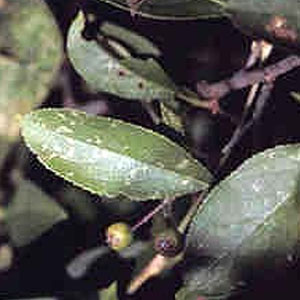Showing the single result
Wholesale Chokeberry Shrubs for Sale in Michigan
If you’re in need of a strong, easy-to-grow plant to offer the customers at your nursery or grow in your own garden, look no further than the chokeberry shrub. Aronia melanocarpa, or black chokeberry, is a mounded deciduous shrub native to the Chicago region of North America. It is known for its clusters (corymbs) of white flowers that give way to red, purple, or black-colored berries in the fall called aronia berries or chokeberries.
Why Grow Chokeberry Shrubs
Aronia shrubs are a popular choice for many residential and commercial landscapes for several reasons. The first is their beauty. The chokeberry shrub is a stunning sight to behold in all seasons. During the spring and mid-summer, lush dark green leaves serve as a backdrop for gorgeous white flower clusters to create a striking contrast. As summer comes to an end, the leaves turn a vibrant autumnal red and berries of vivid red, deep purple, or stark black take the place of the spring flowers.
The other reason homeowners and landscapers seek Aronia melanocarpa is for its namesake fruit. Chokeberries (also known as aronia berries) are packed with vitamin C and antioxidants, putting them in the colloquial “superfruit” category. Off the bush, their taste is very tart and a little bitter. Some people like to eat them on their own, but many prefer to harness their mouth-puckering flavor for jams, juices, baked goods, and even wines. If you want to attract wildlife to your property, aronia berries are a popular treat for birds, turkey, grouse, deer, rabbits, and other small mammals in fall and mid-winter.
How to Grow Chokeberry Shrubs
Chokeberry shrubs are hardy plants that can thrive in a variety of different growing conditions with minimal care, making them generally easy for anyone to grow. They are also resistant to pest infestation and disease, typically giving them a lifespan of decades or more. There are three different species—black chokeberry, red chokeberry, and purple chokeberry. Species have been known to hybridize and are primarily distinguished by the color of the fruit they bear.
Soil Conditions for Chokeberry Shrubs
Aronia shrubs can tolerate virtually any soil type. While they prefer moist, well-drained, and acidic soils, they can also grow in marshy conditions, dry soils, alkaline soils, and sandy soils. They are fairly tolerant of soil compaction and high saline levels.
Light Conditions for Chokeberry Shrubs
Chokeberry can be grown either in partial shade or full sunlight. It will do well in both, but if you’re growing primarily for berries, you’ll see a higher production with full sun exposure. Berries should start to grow by year three, with heavier yields beginning in year five.
Planting Chokeberry Shrubs
The size of a full-grown aronia shrub can range from small to medium, approximately somewhere between 3-8 ft tall. Their width can reach from 3-6 ft. Bushes will spread as they grow over time, so if you’re planting multiple shrubs you should space them between 3-6 ft apart in rows that are at least 2 feet apart. When planting, dig your hole to the depth of the root ball and about 3-4 times as wide as it is deep to allow for easier root spread.
Ongoing Chokeberry Shrub Maintenance
Aronia shrubs are very adaptable plants, and as such are considered low-maintenance. They do not require much ongoing care, particularly after the first couple of years. There are only a few regular tasks you’ll need to complete to cultivate a healthy chokeberry shrub.
Fertilizing Chokeberry Shrubs
Chokeberry usually grows well enough on its own that it does not need additional fertilizer. However, applying it occasionally can provide additional nutrients and promote more robust growth and optimal health. If you choose to fertilize your aronia shrub, do so first as you are planting. Then, you can reapply a modest layer once per year each spring or use a 3-4-inch layer of organic mulch.
Watering Chokeberry Shrubs
As chokeberry can grow in both dry and moist conditions, its water needs are minimal. In fact, aronia is considered drought tolerant. Try to keep moisture-levels consistent for the first two years of growth. After that, natural rainfall should be enough to sustain it. If you live in a drier area or are experiencing longer than average periods without rainfall, water your shrub as you would any other plant, ensuring the deep soil is sufficiently moist.
Pruning Chokeberry Shrubs
Aronia shrubs only need pruning every four to five years, unless you don’t want them to spread. It is best to prune them during the late dormant season to promote better spring growth. If you don’t want the shrubs to spread, you will need to prune and break up new sprouts, called suckers, as they appear.
Harvesting Chokeberry Shrubs
You should wait until berries are fully ripe to remove them from your aronia shrub. They typically reach peak quality in late summer or early fall, depending on the region in which they’re growing. A good rule of thumb is to wait until no red is left anywhere on the berries.
At Cold Stream Farm, we sell bare root chokeberry seedlings and transplant shrubs wholesale and for individual retail purchase. There is no minimum order, so whether you want a supply for your entire nursery or landscaping company or just a single shrub for your own front lawn, we have your needs covered. Our wholesale chokeberry shrubs and other shrubs and trees are available to be shipped anywhere in the continental U.S., or picked up directly from our location in Free Soil, Michigan.
Contact the Cold Stream Farm team for more information on any of our plant products or place your order online today!

